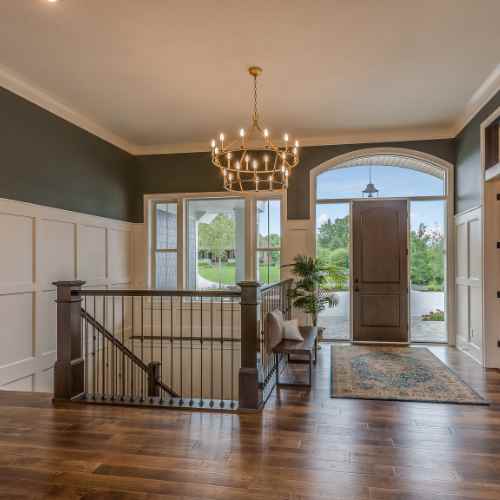Heterogeneous Vinyl Flooring (HVF) is a type of flooring made from multiple layers of vinyl material. Here are its key characteristics:
Definition:
Heterogeneous Vinyl Flooring consists of multiple layers, including:
1. Backing layer
2. Core layer (mix of PVC, fillers, and plasticizers)
3. Decorative layer (print film or design layer)
4. Wear layer (clear vinyl layer)
Composition:
1. PVC (Polyvinyl Chloride) resin
2. Plasticizers
3. Fillers (e.g., calcium carbonate)
4. Pigments
5. Stabilizers
Benefits:
1. Durability
2. Water resistance
3. Low maintenance
4. Easy to clean
5. Resistance to scratches and abrasions
6. Comfortable underfoot
7. Suitable for high-traffic areas
Features:
1. Thickness: 2-5 mm
2. Patterns: Wood, stone, abstract, and textile designs
3. Surface treatment: Embossed, matte, or glossy finish
4. Installation: Glue-down, loose-lay, or click-lock
Advantages over other flooring types:
1. More durable than LVT (Luxury Vinyl Tile)
2. Easier to maintain than ceramic or porcelain tiles
3. Warmer and more comfortable than natural stone
4. More resistant to moisture than laminate or hardwood
Applications:
1. Commercial spaces (offices, hospitals, schools)
2. Residential areas (kitchens, bathrooms, living rooms)
3. Industrial settings (warehouses, factories)
4. Public areas (airports, shopping malls)
Brands and Manufacturers:
1. Armstrong Flooring
2. Shaw Floors
3. Mohawk Flooring
4. Forbo Flooring
5. Gerflor
Price Range (per sq. ft.):
1. Basic: $0.50-$2.00
2. Mid-range: $1.00-$3.50
3. Premium: $2.50-$5.50
Comparison to Homogeneous Vinyl Flooring:
1. Heterogeneous Vinyl Flooring has multiple layers, while Homogeneous Vinyl Flooring is a single-layer product.
2. Heterogeneous Vinyl Flooring offers more design options and patterns.
3. Heterogeneous Vinyl Flooring is generally more durable and resistant to wear


